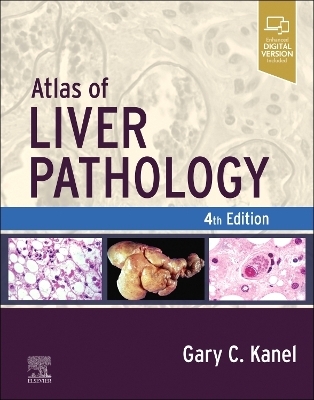
NASH
An Issue of Clinics in Liver Disease
Seiten
2007
|
2007 ed.
Saunders (Verlag)
978-1-4160-4289-1 (ISBN)
Saunders (Verlag)
978-1-4160-4289-1 (ISBN)
- Titel ist leider vergriffen;
keine Neuauflage - Artikel merken
Presents the views of NAFLD experts on epidemiology, natural history, diagnosis, pathogenesis, and treatment of NAFLD. This book presents work on to the importance of NAFLD in children and in the individuals who undergo weight reduction surgery. It discusses the role of genomics and proteomics in understanding NAFLD and developing biomarkers.
Nonalcoholic fatty liver disease (NAFLD) is recognized as an important cause of chronic liver disease worldwide. NAFLD is the hepatic manifestation of metabolic syndrome and is strongly associated with metabolic conditions including central obesity, insulin resistance, dyslipidemia, and hypertension. NAFLD progression is related to the histologic subtype of Non-alcoholic Steatohepatitis (NASH). An estimated 15-20% of patients with NASH may progress to advanced stages of fibrosis. Many steps in the pathogenesis of NAFLD and NASH are ill defined, but insulin resistance and adipokines apparently play predominant roles. Because effective treatments for NASH are yet to be developed, several potentially promising treatment approaches are under investigation. This issue of "Clinics in Liver Diseases" presents the views of several internationally renowned NAFLD experts on the most up to date epidemiology, natural history, diagnosis, pathogenesis, and treatment of NAFLD. Additionally, this issue presents recent work on to the importance of NAFLD in children as well as in the individuals who undergo weight reduction surgery.
Finally, experts discuss the role of new technologies, such as genomics and proteomics, in understanding NAFLD and developing new biomarkers, including fibrosis markers.
Nonalcoholic fatty liver disease (NAFLD) is recognized as an important cause of chronic liver disease worldwide. NAFLD is the hepatic manifestation of metabolic syndrome and is strongly associated with metabolic conditions including central obesity, insulin resistance, dyslipidemia, and hypertension. NAFLD progression is related to the histologic subtype of Non-alcoholic Steatohepatitis (NASH). An estimated 15-20% of patients with NASH may progress to advanced stages of fibrosis. Many steps in the pathogenesis of NAFLD and NASH are ill defined, but insulin resistance and adipokines apparently play predominant roles. Because effective treatments for NASH are yet to be developed, several potentially promising treatment approaches are under investigation. This issue of "Clinics in Liver Diseases" presents the views of several internationally renowned NAFLD experts on the most up to date epidemiology, natural history, diagnosis, pathogenesis, and treatment of NAFLD. Additionally, this issue presents recent work on to the importance of NAFLD in children as well as in the individuals who undergo weight reduction surgery.
Finally, experts discuss the role of new technologies, such as genomics and proteomics, in understanding NAFLD and developing new biomarkers, including fibrosis markers.
| Erscheint lt. Verlag | 1.8.2007 |
|---|---|
| Reihe/Serie | The Clinics: Internal Medicine ; v. 11-1 |
| Verlagsort | Philadelphia |
| Sprache | englisch |
| Themenwelt | Medizinische Fachgebiete ► Innere Medizin ► Hepatologie |
| ISBN-10 | 1-4160-4289-X / 141604289X |
| ISBN-13 | 978-1-4160-4289-1 / 9781416042891 |
| Zustand | Neuware |
| Haben Sie eine Frage zum Produkt? |
Mehr entdecken
aus dem Bereich
aus dem Bereich
Diagnostik, Differenzialdiagnostik, Therapieansätze
Buch (2016)
Thieme (Verlag)
CHF 148,80
Buch | Softcover (2020)
Wiley-Blackwell (Verlag)
CHF 119,95
Buch | Hardcover (2023)
Elsevier - Health Sciences Division (Verlag)
CHF 369,95


